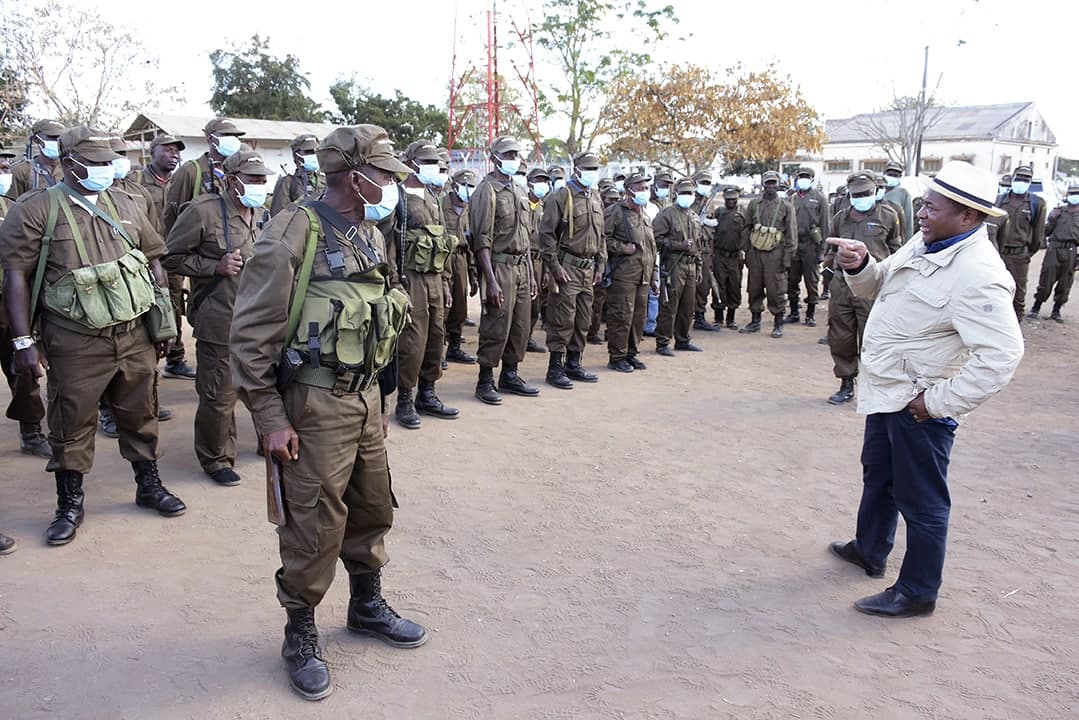The following article is excerpted from the Cabo Ligado Monthly report for September 2021, published on 15 October 2021
As noted in Challenges and Opportunities for Returnees in Cabo Delgado, for many displaced civilians in Cabo Delgado, the race to return is on. Poor conditions in resettlement camps, combined with the pressing need to offset reductions in food aid with local agricultural production, are leading displaced people to attempt to move back to their communities in the conflict zone before the rainy season begins in earnest. According to one recent estimate, some 30,000 people have returned to their homes in Palma town alone in recent weeks, coming both from nearby Quitunda and as far away as Pemba.
The opportunity to return home, provided by recent successful offensives carried out by pro-government forces, is a welcome boon to displaced civilians struggling to survive in overcrowded resettlement camps and host communities. For Mozambican forces and their allies in the RDF and SAMIM, however, the returns pose a challenge that they may not be prepared to take on.
The single greatest strategic shift in the Cabo Delgado conflict in 2020 was the mass abandonment of the conflict zone by civilians. The displacement was a shock to the province overall, causing widespread misery due to inadequate food, shelter, and public health facilities to accommodate fleeing people. It also shifted the character of the conflict. Prior to widespread displacement, insurgents had relied on civilians as a consistent source of supplies and recruits, whether through coercion, negotiation, or persuasion. With civilians gone, and the economic networks to sustain them gone as well, insurgents began to find it very difficult to maintain their levels of supply.
The sudden return of large numbers of civilians to the conflict zone, therefore, represents a potential lifeline for the insurgency at a time when the group is under unprecedented military pressure. To prevent the insurgency from revitalizing itself by preying on newly returned civilians, pro-government forces must find ways to prevent insurgents from being able to access civilians in areas where insurgents have long operated. At this point, pro-government forces face limitations that will make it difficult for them to provide high levels of civilian protection.
The biggest challenge to providing effective civilian protection is overall pro-government force levels. Even with the recent announcement that Rwandan forces have doubled their deployment to a contingent of around 2,000 and SAMIM maintaining its commitment of roughly 750 troops, total foreign troop presence in Cabo Delgado remains limited. Estimates of Mozambican ground force levels in Cabo Delgado vary, but even at full deployment, it would amount to about 10,000 troops. The true number is certainly significantly lower -- one well informed source estimated it at less than 4,000. Even if we use the most optimistic possible number, therefore, force estimates put about 13,000 troops in the pro-government coalition. By comparison, recent estimates suggest that some 850,000 civilians have been displaced from Cabo Delgado.
Estimates for proper civilian to soldier ratios in counterinsurgency are hard to come by. One popular heuristic, calling for one soldier for every 20 civilians that need protecting, is the subject of significant controversy among scholars and practitioners. Yet, in a situation like in Cabo Delgado, where civilian communities are spread out and difficult to access and insurgents can move easily overland, estimating on the high end appears prudent. If we apply the 1:20 heuristic, a high 13,000 troop estimate of current pro-government forces could protect 260,000 civilians – about 30% of the total number of displaced people. If we use the more realistic estimate of 7,000 troops, then the protectable population dwindles to 140,000.
The situation gets even more concerning looking at the specifics of civilian protection in Cabo Delgado in the near future. The RDF, which is offering the greatest number of foreign troops, are primarily deployed in Palma and Mocimboa da Praia districts, where the civilian protection challenge is easiest. In Palma, civilians are largely returning to coastal areas with easy road access, and many of them are returning to Palma town itself. It is therefore relatively easy for pro-government forces in Palma to patrol areas where most civilians are living. In Mocimboa da Praia district, so few civilians are there currently that RDF and Mozambican forces can exercise significant control over who returns to the district and where they settle.
In Macomia and Nangade districts, however, the less-resourced SAMIM forces are the main foreign contingent. Civilians in these districts are less concentrated, making it difficult for pro-government forces to deploy widely enough to protect them all. The problem is compounded by the fact that successful RDF offensives in Mocimboa da Praia district have pushed more insurgents into Macomia and Nangade, where they threatened civilians throughout August and September.
To make up for their numerical deficiencies, pro-government forces will likely attempt to exert increased control over returning civilians in order to make sure that the insurgency remains on the back foot. Though repressive measures against returning civilians may be militarily expedient in the short term, they threaten the perceived legitimacy that RDF and SAMIM forces now enjoy. Navigating the challenge of providing civilian security with insufficient forces while maintaining legitimacy will be the core task of pro-government forces in the next six months of the conflict.









